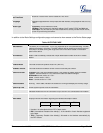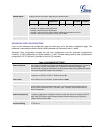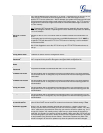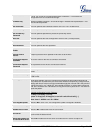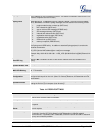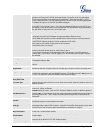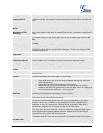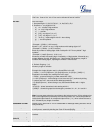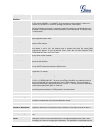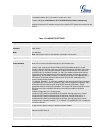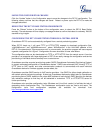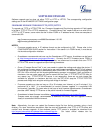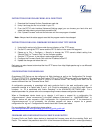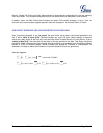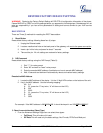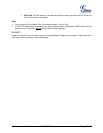
Firmware version 1.0.0.23 DP715/DP710 User Manual Page 46 of 52
first vocoder in the above vocoder Preference List or the actual used payload type
negotiated between the 2 conversation parties at run time.
Default is 2, up to 10/20/32/64 for G711/G726/G723/other codecs respectively)
Symmetric RTP
Default is No. When set to “Yes” the device will change the destination to send RTP
packets to the source IP address and port of the inbound RTP packet last received by the
device.
Table 15: HANDSETS SETTINGS
Page All Handsets
This button will allow you to ring all the Handsetsregistered with the DP715Base Station
Desubscribe All
Handsets
This button is used to de-register all the handset previously registered with the DP715
Base Station
Enable Subscription
Mode
This button will allow you to set the DP715 into subscription mode in order to register a
new Handset.
Note: Subscription mode is automatically exited after 120 seconds.
Page Handset
Allow you to ringa specific Handset registered with the DP715 Base Station
Desubscribe Handset
This button is used to de-register the handset selected from the DP715 Base Station.
Enable Handset
When set to Yes the Handset will be able to receive/make calls.
Hunting Group
This feature enables the DP715 to register all existing Handsets with the same phone
number. Each incoming call will be routed to the first available handset in Linear;
Parallel or Shared linemode. User may configure all Handset as members of the same
Hunting Group or it may configure different handset combinations for more than one
Hunting Group. For example: Handset 1, 3 and 5 are members of the same Hunting
Group, the rest of the Handsets may have separate numbers and may be reached
independently. Any Handset, member of a Hunting Group that is not registered with a
SIP account, will be able to place outbound calls using the SIP credentials of the
primary Hunting Group Handset.
For example: Handset 1, 2, and 3 are members of the same Hunting Group. Handset 1
is registered with a SIP account. Handset 2, and 3 are not registered. Handset 2 and 3
will be able to place outbound calls using the SIP account of Handset 1. Select
appropriate value for Hunting Group feature. The original SIP account should be set to
Active while the group members should be set to the port number of the Active
Handset.
Example configuration of a Hunting group:
Handset #1: SIP UserID and Authenticate ID entered, Hunting group set to "Active"
Handset #2: SIP UserID and Authenticate ID left blank, Hunting Group set to "1"
Handset #3: SIP UserID and Authenticate ID left blank, Hunting Group set to "1"
Handset #4: SIP UserID and Authenticate ID entered, Hunting group set to "None"
Hunting Group 1 contains Handset 1, 2, 3. Handset 4 is registered but it is not added to
the Hunting Group 1.
SIP User ID
User account information, provided by VoIP service provider (ITSP). Usually in the form
of digit similar to phone number or actually a phone number.
Authenticate ID
SIP service subscriber’s Authenticate ID used for authentication. Can be identical to or
different from SIP User ID.
Authenticate Password
SIP service subscriber’s account password.
Name
SIP service subscriber’s name for Caller ID display.
Profile ID
Select the corresponding Profile ID between Profile 1 and Profile 2.



